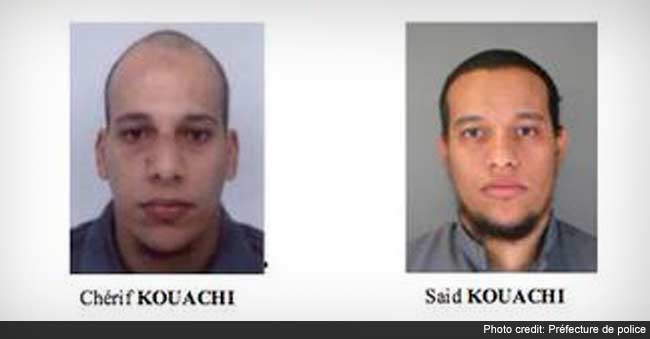Resolution 1325
Fifteen years ago, the United Nations Security Council (UNSC) adopted the landmark Resolution 1325 on Women, Peace, and Security. The resolution notably encourages the participation of women and the incorporation of gender perspectives in UN peace and security efforts. Earlier this month, NATO headquarters in Brussels celebrated Gender Week, presenting the findings of the UNSCR Reload Project.
Using the Annual National Reports published by NATO’s International Military Staff Office of the Gender Advisor from 1999 to 2013, this project documents the current integration of women in the armed forces of NATO member states. The study was conducted by Rey Juan Carlos University and the Australian Human Rights Commission, in collaboration with NATO’s International Military Staff Office of the Gender Advisor. The results are striking. Across several indicators, there is a largely positive trend regarding women in the armed forces.
Overall, the study found that female representation in the armed forces has increased. In 1999, women represented only 7.4% of the armed forces of NATO member states. By 2013, this figure grew to 10.5%. The countries with the highest representation of women include Hungary, at 20.3%, the United States, at 18.0%, Latvia, at 16.5% and Bulgaria, at 14.6%. Canada’s figure stood at 14.1%, which ranks it fifth among all NATO countries. Canada’s progress on this metric is fairly admirable.
It is worth noting however, that the rate of growth has been slow.
A Glass Ceiling?
Strikingly, the report also notes that over the past four years, the percentage of women in officer positions has remained at around 20-25%, suggesting the existence of a ‘glass ceiling.’ For instance, in 2013, 75% of women in NATO member forces belonged to the non-commissioned officers, private, and corporal ranks, while only 25% were placed in the officer rank or above. On this metric, Canada has also scored well relative to other NATO member states. Canada, at 4.1% of the total force along with Belgium, at 2.78%, rank as the two NATO members with the highest percentage of women in senior ranks (OF-6).
However, Rebecca Tiessen (2015) notes that according to the Global Network of Women Peacebuilders (GNWP), “in Canada, disaggregated data revealed that women continue to be concentrated in ‘traditional’ support areas, such as administration, logistics and intelligence.” The GNWP also stated that although more women in global peace operations is an admirable goal, the pool of candidates for peacekeeping missions is too small for this goal to be attainable, considering the lower proportion of women in the Canadian Armed Forces and the RCMP.
Canada’s National Action Plan
One area in need of improvement with respect to UNSCR-1325 is Canada’s National Action Plan. Although by 2013, seventeen NATO member states had formulated National Action Plans (NAP), overarching implementation was lacking. 39% of NATO countries have not implemented a National Action Plan on UNSCR 1325. Canada adopted an NAP relatively late when compared to other high-income countries, waiting almost 10 years after UNSCR-1325 had been passed to do so.
According to a May 2014 Report by the Women, Peace, and Security Network of Canada, Canada’s National Action Plan can be described as “highly generalist,” lacking concrete details on how it will achieve its actions or indicators. Both progress reports (2011-12 and 2012-13) released by the Government of Canada thus far, lack information on funding and transparency.
With respect to its approach to implementing UNSCR-1325, researchers Tiessen and Tuckey (2014) note, “Canada continues to gloss over the major issues in favour of supplying band-aid solutions.” According to Jo-Ann Rodrigues (2014), the Dept. of Defence had carried out “very poor reporting” in contributing quantitative and qualitative data. On the other hand, the RCMP was lauded for its commitment to reaching the UN target of deploying 20% of female officers in peace operations as well as its commitment to implement intake based on an all-female application process.
Beth Woroniuk (2014) states that although there are indicators listed in the NAP, there are no targets specified. Also, the 2012-13 report does not reference the 2011-12 report, making it difficult to examine and measure progress on a year-to-year basis. It is important to ensure that in the future, the indicators listed in the NAP function as effective accountability mechanisms. One way this could be achieved is by adhering to the Specific, Measurable, Achievable, Relevant, and Time-bound, or SMART, guidelines.
What Does the Future Hold?
Canada’s performance on key indicators such as female representation in the armed forces and percentage of women in officer positions has been admirable, relative to other NATO member states. However, Canada’s implementation of its National Action Plan is in need of improvement, especially in defining targets and establishing effective accountability mechanisms.
Beyond statistics, NATO’s UNSCR-1325 Reload Project report has stated that increasing the participation of women in the armed forces is not only about meeting normative quotas. Given the complex security environment and emerging security threats, requirements of physical strength are not as relevant today as in the past. Skills valued in today’s security landscape include adaptability, strategic thinking, working remotely, collecting intelligence, and reaching out to local populations. Contemporary threats such as cyber-warfare and urban warfare will necessitate a wider range of skills than before, from both women and men.







